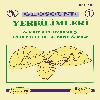Kocaeli İli ve Çevresinde Yılları Arasında Gerçekleşen Tarihsel Depremlerin Konumsal İstatistik Analizi
Spatial Statistical Analysis of Historical Earthquakes in Kocaeli Province and Its Surroundings
___
- Affan, M., Syukri, M., Wahyuna, L., ve Sofyan, H. (2016), Spatial Statistic Analysis of Earthquakes in Aceh Province Year 1921- 2014: Cluster Seismicity. Aceh International Journal of Science and Technology, 5(2), 54-62.
- Al-Ahmadi, K., Al-Amri, A., ve See, L. (2013), A Spatial Statistical Analysis of the occurence of earthquakes along the Red Sea floor spreading: Clusters of Seismicity. Arabian Journal of Geosciences, 7(7), 2893–2904.
- Ayday, C., Yaman, N., ve Göçmez, A. (2015), 1900-2015 Arası Deprem Dış Merkez Verileri ile Eskişehir İli Deprem Risk Analizine Katkılar. TUFUAB VIII. Teknik Sempozyumu, 21-23 Mayıs, Konya.
- Bakak, Ö. (2016), 2005 Sığacık Körfezi (İzmir) Depremlerinin Mekansal Değerlendirilmesi. Yerbilimleri, 37(1), 51- 63.
- Çevre ve Şehircilik Bakanlığı, Kocaeli Valiliği Çevre ve Şehircilik İl Müdürlüğü (2011). Kocaeli İl Çevre Durum Raporu.
- Erdoğan, S. (2010), Epidemiyolojide CBS Uygulamaları: Konumsal Kümeleme Yöntemlerinin Karşılaştırılması-Menenjit Örneği. Harita Teknolojileri Elektronik Dergisi, 2 (2), 23-31.
- Faenza, L., Marzocchi, W., Lombardi, A.M., ve Console, R. (2004) Some insights into the time clustering of large earthquakes in Italy. Annales De Geophysique, 47(5), 1635–1640.
- Gedik, İ., Pehlivan, S., Timur, E., Duru, M., Altun, İ., Akbas, B., Özcan İ., ve Alan, İ. (2004), Kocaeli Yarımadası Jeolojisi. MTA raporu.
- Han, S., Ishioka, F., ve Kurihara, K. (2008) Detection of hotspot for Korea earthquake data using echelon analysis and seismic wave energy. Journal of the Faculty of Environmental Science and Technology, 13(1), 51–56.
- Holden, L., Sannan, S., ve Bungum, H. (2003), A stochastic marked point process model for earthquakes. Natural Hazards And Earth System Sciences, 3, 95–101.
- İlçi, V. (2013), Trafik Kaza Kara Noktalarının Mekansal İstatistiksel Yöntemlerle Belirlenmesi: Afyonkarahisar-Konya Örneği. Yüksek Lisans Tezi, Afyon Kocatepe Üniversitesi, Fen Bilimleri Enstitüsü, Afyon, Türkiye.
- Mitchell, A. (2005), The ESRI Guide to GIS Analysis, Volume 2. ESRI Press. Pei, T., Zhua, A.X., Zhou, C., Li, B., ve Qin, C. (2007) Delineation of support domain of feature in the presence of noise. Computers & Geosciences, 33, 952–965.
- Pei, T. (2011) A nonparametric index for determining the numbers of events in clusters. Mathematical Geosciences, 43, 345–362.
- Shurygin, A M. (1993), Statistical analysis and long-term prediction of seismicity for linear zones. Mathematical Geology, 25(7), 759– 772.
- Tağıl, Ş., ve Alevkayalı, Ç. (2013), Ege Bölgesinde Depremlerin Mekansal Dağılımı: Jeoistatistiksel Yaklaşım. Uluslararası Sosyal Araştırmalar Dergisi, 6(28), 370- 379.
- Vasudevan, K., Eckel, S., Fleischer, F., Schmidt, V., ve Cook, F. A. (2007) Statistical analysis of spatial point patterns on deep seismic reflection data: a preliminary test. Geophysical Journal International, 171(2), 823–840.
- Yakar, M. (2011), Nüfus Dağılımının Mekansal Analizi: Afyonkarahisar ili Örneği. Uluslararası Sosyal Araştırmalar Dergisi, 4(19), 389-406.
- Zimeras, S. (2008) Exploratory point pattern analysis for modeling earthquake data. 1st WSEAS International Conference On Environmental And Geological Science and Engineering, 11-13 September, Malta.
- Yayın Aralığı: Yılda 3 Sayı
- Başlangıç: 2016
- Yayıncı: Murat yakar
Uydu Konum Belirleme Sistemlerindeki (GNSS) Güncel Durum ve Son Gelişmeler
Üç Boyutlu Kent Modellerinde Ayrıntı Düzeyi Kavramı İnce Minareli Medrese (Konya) Örneği
Fırat URAY, Abdullah VARLIK, Azim METİN
ÜÇ BOYUTLU KENT MODELLERİNDE AYRINTI DÜZEYİ KAVRAMI İNCE MİNARELİ MEDRESE (KONYA) ÖRNEĞİ
Fırat URAY, Abdullah VARLIK, Azim METİN
Kümeleme Analizi Sonuçlarının Tematik Haritalar ile Görselleştirilmesi
İbrahim Öztuğ BİLDİRİCİ, Nurbanu Afacan AFACAN
Kentsel Sorunların Yönetimi için Bir Gönüllü Coğrafi Bilgi Mobil Uygulaması Geliştirilmesi
Bülent BOSTANCI, Talha TAŞKANAT, Erkan BEŞDOK, Abdullah KARAAĞAÇ
Güneş Enerji Santrali (GES) Geliştirme: Uşak Örneği
İki Boyutlu Bazı Datum Dönüşüm Yöntemlerinin İncelenmesi
Mustafa HÜSREVOĞLU, Ekrem TUŞAT
2016 Yılı 6 Mw ≥ 7.0 Depremin İyonküre Değişimlerinin İncelenmesi
